Today, they call it dark tourism in Vienna. But we used to call it simply history. Here’s what you can see, what you should know and how you can fall in love with the city even more.
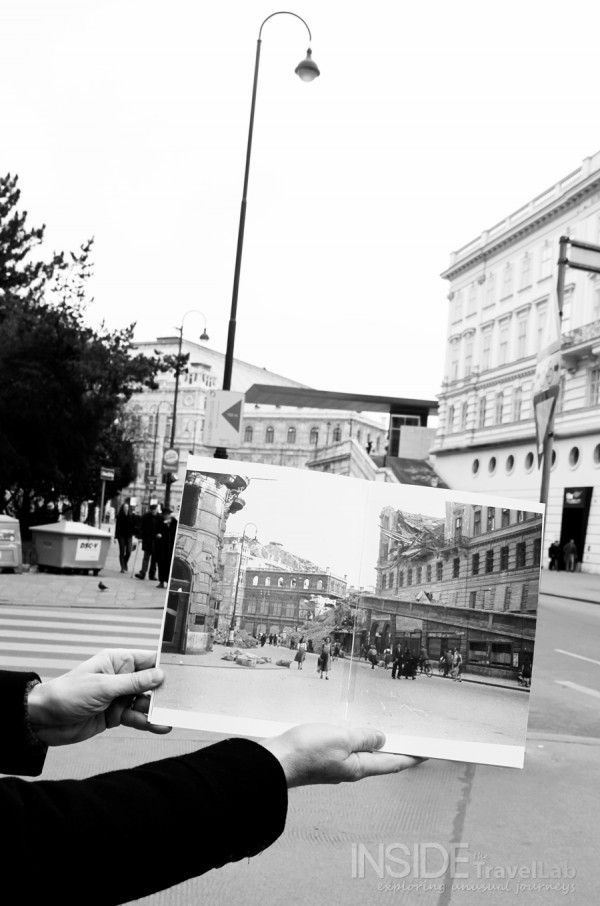
Dark Tourism in Vienna: A History
This article forms part of a series called the Iron Route about the journey from Istanbul to Berlin by train, zig-zagging across the former iron curtain. It was sponsored by InterRail. The Austrian National Tourist Office supported my stay in Vienna
What Happened After World War Two?
The year is 1945 and ash, smoke, poverty and despair rise through the rubble of Europe. Nearly ten million Soviets died on the eastern front. Eleven million in the concentration camps. And the Soviet Red Army have just captured Vienna.
Berlin stands divided between the victorious Allied Forces: France, Britain the US and USSR. This division, hastily conceived out of the urgent need to manage a crippled city, paved the way for some of the most dramatic scenes of the Cold War: the Berlin Wall, the Berlin Airlift, and in 1989, the scenes of reunification.
But What About Vienna?
But I haven’t reached Berlin yet. I’m in Vienna, in 2011, in Austria. A country known for Mozart, the Habsburgs, coffee houses and rich, sharp-tasting chocolate cake called Sachertorte.
What isn’t so well known is that Vienna, too, stood divided in 1945. Just as in Berlin, the Allies carved the city into different districts to sift through the wreckage, repatriate the displaced and generally try to make sense of the new world and new world order.
Berlin went on to become a central focus for the Cold War; Vienna declared itself neutral after only ten years.
Why? How? And does this fit into the context of the Iron Route?
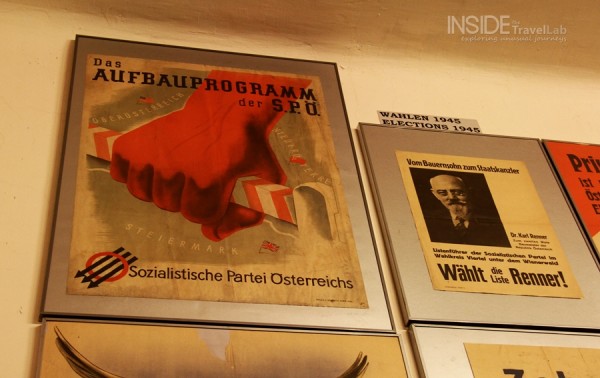
Why Was Vienna Different to Berlin?
“The short version is that Stalin traded Vienna for Berlin,” surmised my guide, the intelligent and interesting man with the longest name imaginable: Gerhard Strassgschwandtner.
He runs The Third Man Museum, an excellent homage to the hit film that scooped up a shelf of Oscars back in 1950.
The Third Man
If both screenplay and novel are unfamiliar to you (and don’t worry, they were to me too) the Third Man tells the story of a man named Martins who arrives in Vienna during its occupation at the end of the Second World War.
Within hours, he learns that the friend he’s come to visit, one Harry Lime, is dead and buried. Yet there’s a policeman lurking around who seems convinced that Lime was not all he seemed.
Enter detective work, adventure, conspiracy and derring-do as those involved try to work out who the mysterious third man was at the moment when Lime was killed, all set against the backdrop of post-war Vienna and the farce of the four-power governing system.
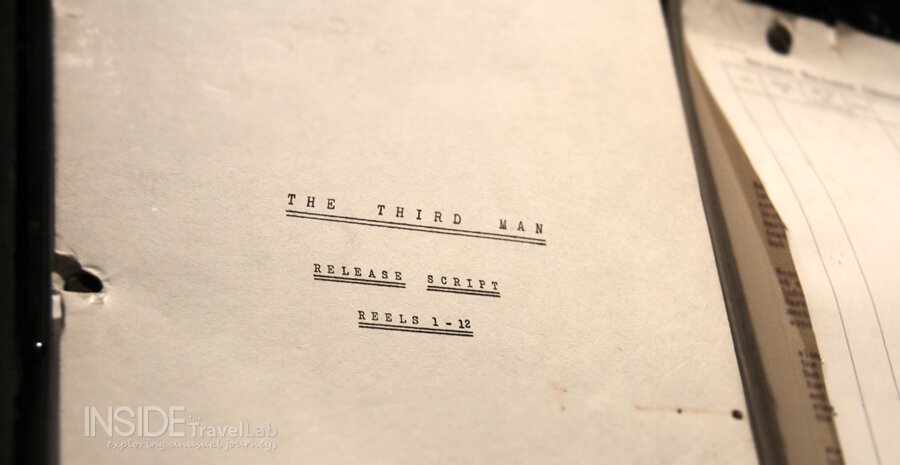
Third War Film Sets in Vienna
The backdrop, by the way, isn’t a Hollywood screen. The Third Man really was filmed in post-war Vienna. That rubble, that darkness, the raw and decimated feel. It’s real.
Out on the streets of Vienna today, the grey cloak of winter blunts – but cannot disguise – the city’s classical beauty.
Vienna’s Classical Beauty
Vienna symbolises a masterpiece of imperial European resplendence. Of columns, arches, sweeping grand driveways, statues, sculptures and cosy cobbled alleyways. Vienna remains a global centre for culture, classical music and history.
And it’s a powerful history. I stood in the Museumsquartier, listening to Gerhard describe the buildings around me. First, the statue of Empress Maria Teresa and the story of her sixteen children and 40 years on the throne.
Then, we crossed the road and he showed me another picture.
Vienna and the Third Reich: Dark Tourism in Vienna
There, in black and white, but there nonetheless was a photo of the ground I was standing on. The balcony I was looking at. The skyline of Vienna.
Only this photo had more than the odd duffel-coated tourist and a ramshackle line of schoolchildren.
This photograph had a rapturous crowd filling every available space, with every face turned to idolise one man: Adolf Hitler as he welcomed Austria into the Third Reich in 1938.
I tried to ignore my heartbeat and the cold seeping into my toes. Simply put, I felt sick.
Dark Tourism: Does it Matter?
I’ve wondered before about the purpose of visiting historical sites, in Auschwitz and beyond. Should places carry any power or significance? Does it matter where you are when you think something? Should it make any difference if there’s something you can reach out and touch? I suppose I’m wondering whether or not dark tourism is ethical.
Dark Tourism in Vienna: Hitler’s Dream
“You have to realise,” said Gerhard, “that Hitler was promising a dream. He was promising people hope and a better future, a release from the miserable years of the Great Depression and the shame at losing the empire during the First World War.
“He didn’t arrive saying ‘we will kill the Jews, destroy your homes and leave you in ruins. The Third Reich was supposed to last for 1000 years.
“At the end, people felt humiliated. They felt duped. They’d fallen for the dream, believed it, supported it and,” he taps the photograph of the ruins and the rubble. “This was how it ended.”
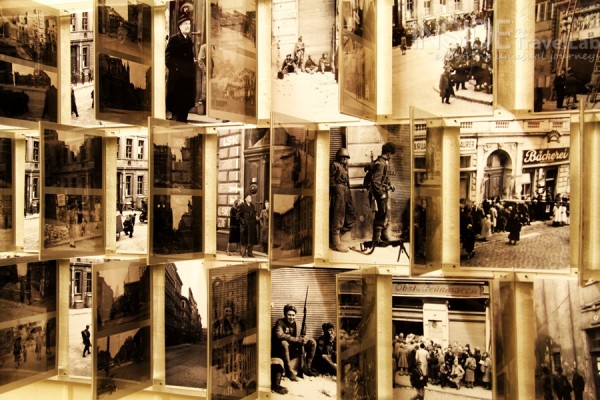
Do People Talk About Dark Tourism in Vienna?
Our conversation continued onto the public tram, where I, for one, felt awkward.
I ask whether we should lower our voices, but Gerhard shakes his head.
“After the war, nobody wanted to talk about it,” he says. “People said that ‘Austria was a victim.’”
“And you, what do you say?”
Why We Should Forget About Dark Tourism in Vienna
He sighs. “I think that the tourist board wants to say to the world ‘Just look at how beautiful Vienna is. Look at Mozart and Sachertorte and the riding school. Forget about that unpleasantness. Look at how pretty our Vienna is.’”
“Vienna is beautiful,” I say, “even without the chocolate cake. But to be fair to the tourist board, they are paying for me to be here…Talking to you.”
“Well, they don’t help fund the museum,” he replies.
Dark Tourism in Vienna’s Coffee Shops
We enter a traditional Viennese coffeehouse and talk among the smoke.
We discuss the borders with Hungary, the ideological divisions that grew between the US and the USSR. The need, for everyone involved, to avoid yet another war in Europe that would spread across the world. To avoid another war that no-one could afford.
What Was the Difference Between Berlin and Vienna?
Ultimately, we arrive again at the central question: Berlin and Vienna. Two cities, both divided. Why the different destinies?
Stalin hungered to keep his territories in the east. And to punish Germany for bringing Russia to its knees twice in half a century. While Vienna had power and great geographical prominence, Berlin remained the heart of the enemy’s core.
Negotiations intensified as the former allies became opponents in a new Cold War. And the short version, when it comes down to it, is that Stalin traded Vienna for Berlin, along with a continued Soviet influence in a communist East Germany.
There would be no Berlin Wall in Vienna.
There is still, however, a wall.
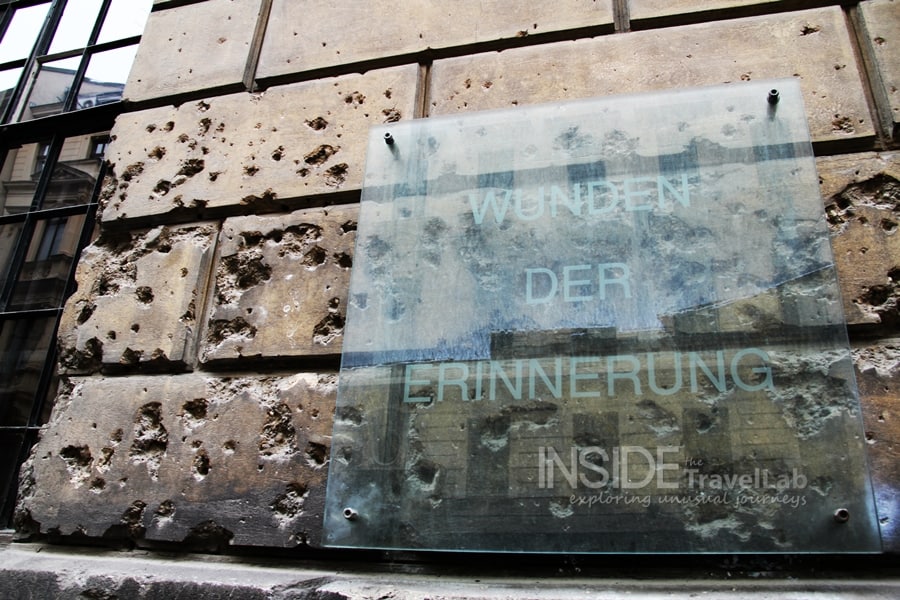
The Berlin Wall in Vienna
It’s located just outside the royal city centre, on a quiet side street lined with cars. It bears a sign that reads Wunden der Erinnerung and the stone is pockmarked at around head height.
Those marks come from gunfire between the Soviets and the Nazis.
The words mean Scars of Remembrance.
More Dark Tourism Sites in Vienna
Of course, the events surrounding World War Two and the Cold War are not the only periods that resulted in dark tourism in Vienna.
To discover more, check out:
- The Cemetery of the Nameless
- The Imperial Crypt
- St. Michael’s Church Crypt
- Blood Alley or Blutgasse Street
- The Hungarian House and its murderous connections
- St. Stephen’s Cathedral Catacombs
- The Funeral Museum
- The Crime Museum
- The Pathologic-Anatomical Museum
- Vienna’s Central Cemetery
I’d highly recommend a visit to the small Third Man Museum for a fascinating look at pre and post-war Vienna. I’d also recommend meeting Austrian tour guide Gerhard Strassgschwandtner if you can, for a fascinating conversation about European history.
Travel Tips for Austria
Austria is a beautiful country to travel around – and it’s also fairly straightforward. Here are some travel tips for Austria.
Paperwork
Make sure you have a valid passport and check whether or not you need a visa. If you need more information on this, then take a look at this guide on how to apply for an Austria visa. Always remember to book travel insurance and check our international travel checklist to make sure that you have everything you need.
What to Wear in Austria
Austria has a relaxed dress code and is very forgiving to visitors. Make sure you have decent hiking gear for the mountains and snow gear for winter.
In Vienna, you’ll fit in a little more if you dress stylishly with long trousers and leather shoes rather than trainers for an evening out. But don’t stress. Almost anything goes in Vienna.
What to Eat in Vienna
Austrian food is sadly overlooked! Remedy that right away by checking out this article on the 15 Austrian dishes you need to know and the best things to eat in Vienna.
More on Travel in Austria
- Why summer in Austria is good for you
- Unique things to do in Graz, Austria’s city of design
- The 10 traditional Austrian dishes everyone should try at least once
- How to enjoy summer in Lech in Austria
- The secrets of the Cheese Road in Austria
- The best places to eat in Graz, Austria’s culinary capital
- Buschenschank Steirmark. Tricky words, great concept
- 15 Beautiful lakes in Austria
- Why St Johann in Tirol is Your Secret Tonic this Summer
- Amazing things to do in Innsbruck and your perfect 3 day Innsbruck itinerary
- What the Viking Aegir Danube Waltz Cruise is really like
- Capital gains: exploring Europe’s longest river

Fascinating article. And, a little-known episode of history.
Thank you
Its an absolutely fascinating piece of history that most of us are not even aware of. This us fantastic, and I am so glad that I am actually following your blog…this can’t be missed!
I really look forward to the rest of journey and live through these cities with your words…
This will make my trip to Vienna more interesting, knowing more of the history. And YES it is worth visiting historic sites! Thanks for sharing this.
Enjoy Vienna – there’s so much more to see than what I’ve written about here. (But it’s good to know that someone else out there is interested in history!)